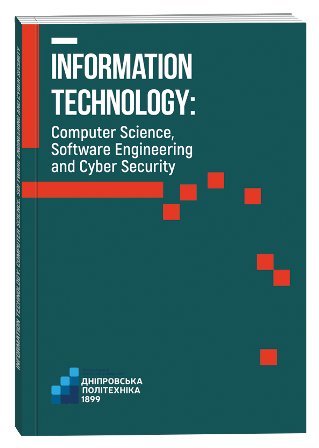SECURE DATA PROCESSING IN BUSINESS-INTERNET PLATFORMS AND E-COMMERCE SYSTEMS
DOI:
https://doi.org/10.32782/IT/2024-4-4Keywords:
e-commerce systems, Internet, data protection, data processing, information security, business Internet platform, cybersecurity.Abstract
Globalization and the development of the Internet have radically changed the ways in which information is exchanged and processed, becoming a destructive force in modern society. Every day, a huge amount of data is transmitted in various formats – text, audio, video, which contributes to progress in the economy, science, education and other areas. The Internet has become a universal platform for integrating businesses, scientific communities and citizens of the world, providing an unprecedented level of interaction and access to information. However, the rapid spread of information technologies carries significant risks. In particular, the protection of sensitive user data, which can be stolen, lost privacy, or even used for manipulation, has become central in the field of information security. This not only threatens individual users, but also undermines trust in digital services as a whole, which hinders their further development. Purpose of the work. Consideration of the experience and challenges of practical implementation of data residency standards in business platforms that have client-server architecture, which must meet modern requirements for the protection of e-commerce systems. Research methodology. Empirical and theoretical methods are used in the work. Scientific novelty. The main technical approaches to ensure compliance with the requirements for data residency in business-Internet platforms and e-commerce systems are analyzed, namely: geographical location of servers, encryption and tokenization, access restrictions, and proxy servers. The lack of uniform approaches to identifying sensitive data and mechanisms for protecting it creates situations where users’ personal information becomes vulnerable. Solving these problems requires the creation and improvement of international standards for data protection regulation, which will take into account the peculiarities of the global digital environment and contribute to the harmonization of national legislations. Conclusions. The article states that the issue of data residency remains one of the main technical and legal challenges of today for modern business and e-commerce systems, where the main stumbling block is the clientserver architecture of modern web platforms and other applications of the same architecture that operate on the global network.
References
Framework for Recommending Data Residency Compliant Application Architecture. URL: https://ieeexplore.ieee.org/document/9712154 (дата звернення 09.10.2024).
Web Services Relocation and Reallocation for Data Residency Compliance. URL: https://ieeexplore.ieee.org/abstract/document/10181214 (дата звернення 09.10.2024).
The Impact of data residency on cloud computing. URL: https://ieeexplore.ieee.org/document/8418109 (дата звернення 09.10.2024).
Data residency as a service: a secure mechanism for storing data in the cloud. URL: https://www.inderscience.com/offers.php?id=100875 (дата звернення 09.10.2024).
Data Residency Challenges and Opportunities for Standardization. URL: https://www.inderscience.com/offers.php?id=100875 (дата звернення 09.10.2024).
Architecting for Compliance and Data Residency. URL: https://medium.com/salesforce-architects/architecting-for-compliance-and-data-residency-13e5d5d9a87f (дата звернення 09.10.2024)
Scale across borders: build a multi-region architecture while maintaining data residency. URL:https://community.aws/content/2dhVhtsciD5gVBlCKUlHoszrDzU/scale-beyond-borders (дата звернення 09.10.2024).
Managing Data Residency – concepts and theory. URL: https://blog.frankel.ch/data-residency/1/ (дата звернення 09.10.2024).
“How AI is transforming cybersecurity” by Gary Eastwood, “ URL: https: / / www. Information – age. com/how-ai-is-transforming-cybersecurity-123478294/ (дата звернення 09.10.2024).
Кларк Дж., Джейкоб Дж. ШІ та кібербезпека: загрози та рішення. Журнал кібербезпеки, 2018. 4 (1), С. 1–14.
І. В. Стьопочкін, О. М. Новіков. Методи штучного інтелекту в кібербезпеці: навч. посіб. для здобувачів спец. 125 «Кібербезпека», 2022. 82 с.
Богом’я В. І., Кочегаров В. С. Кібербезпека в хмарних сервісах за допомогою застосування криптографічних методів. Водний транспорт. № 1 (37). 2023. С. 239–246. doi.org/10.33298/2226-8553.2023.1.37.27
Богом’я В. І., Черемісіна Л. О, Ярмолатій А. В, Бараненко О. О. Резиденція даних сучасних бізнес платформ, їх систем аутентифікації та особливості технічної реалізації в глобальній мережі internet. Водний транспорт. № 3 (41). 2024. С. 240–246.







